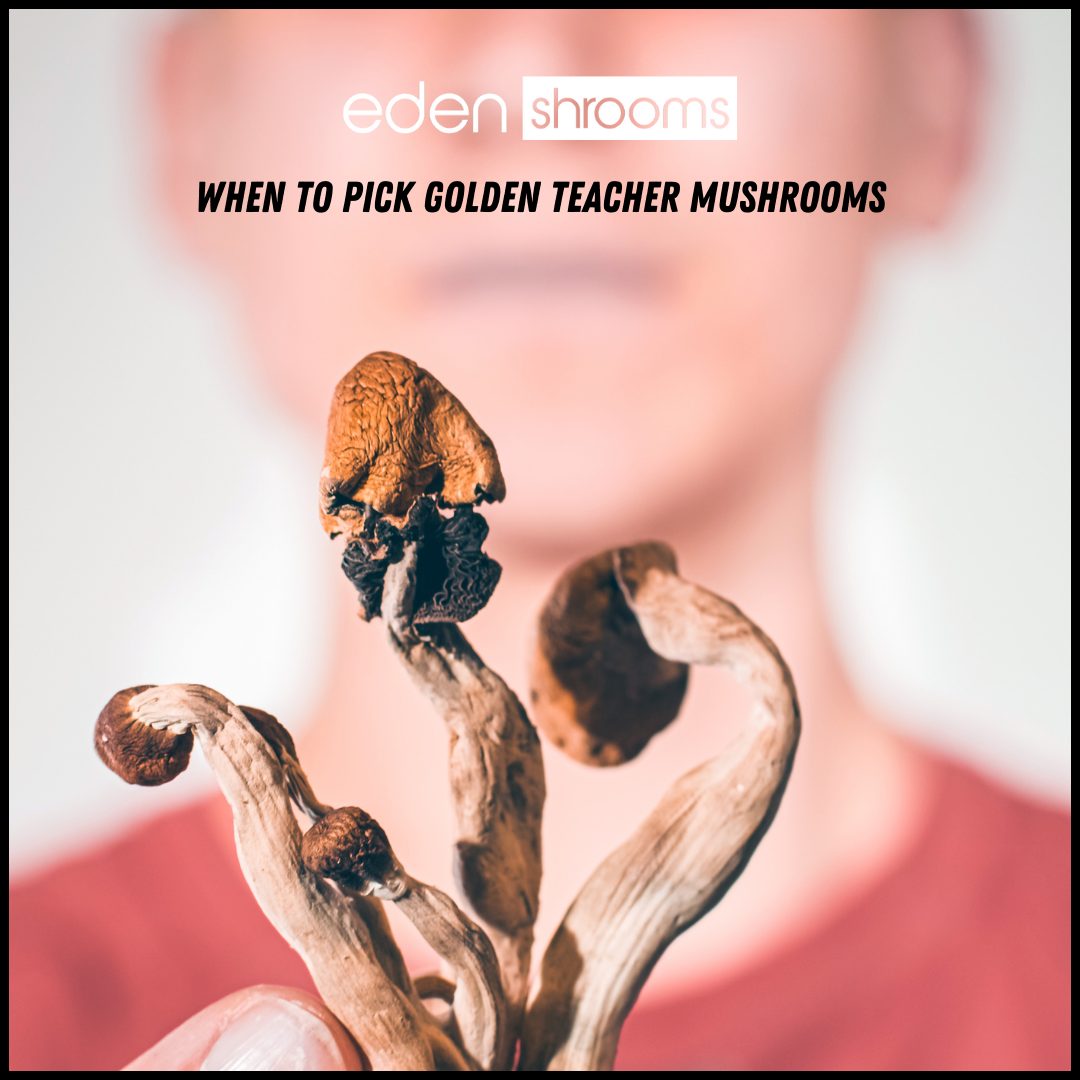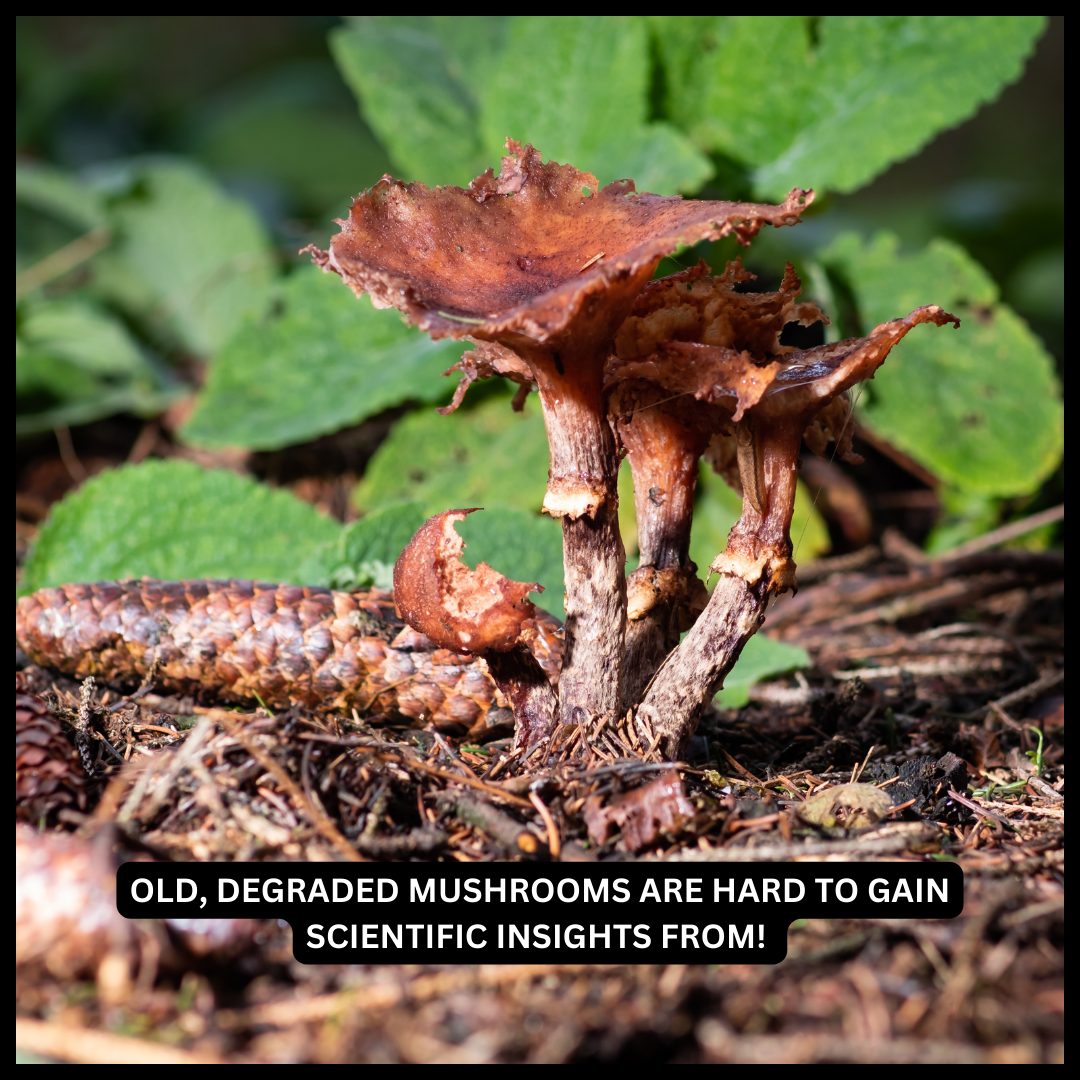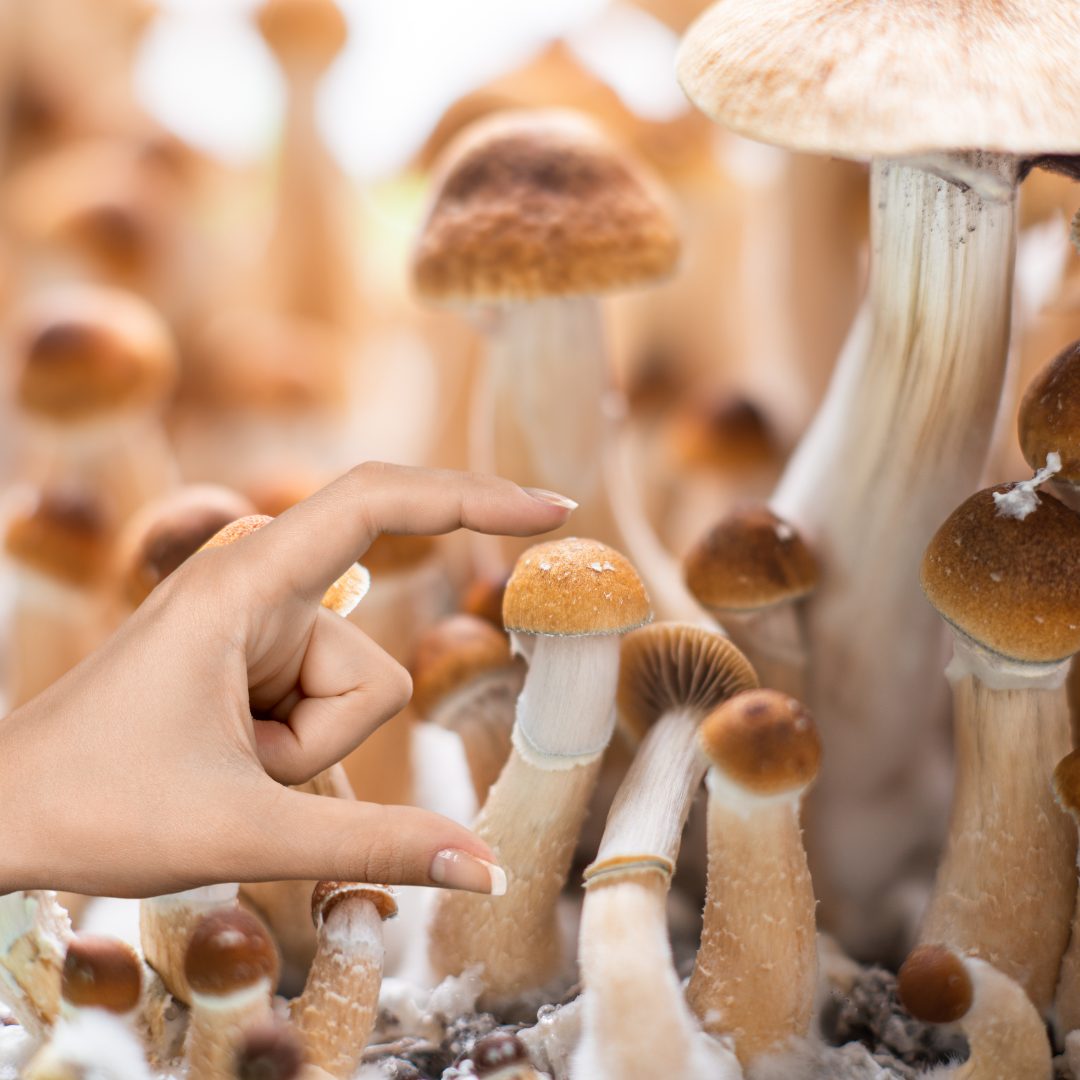Imagine trying to learn about eggs without first understanding the chicken! It’d be confusing, right? Similarly, when studying the spores of golden teacher mushrooms, it is important to grasp what happens at each age of the parent mushroom’s life cycle. Understanding the mechanisms and anatomy of spores and the mushrooms they come from can help you better grasp their characteristics and get more out of your microscopy research.
In this article, we’ll discuss what happens to the caps of golden teacher during their development and how that affects the “best time to pick them” or “harvest them” before spores are released. Let’s dive in.
Please note: This information is not intended to encourage the cultivation, possession, or consumption of golden teacher mushrooms or any other psilocybin-containing mushroom. Rather, it is intended to be a scientific investigation into the relationship between golden teacher behavior and it’s genetics (spores). All information is intended to supplement microscopy research.

When Is The Best Time To Pick Golden Teachers?
Golden Teacher mushrooms only release spores once the veil breaks, exposing the gills on the underside of the cap. Just before the veil tears, the mushrooms are “optimally ready” for harvest. Why? After the veil tears, spores will start to be released, diminishing the aesthetic and chemical concentration of the parent mushroom. As spores are released, the mushroom enters the end of its life cycle and slowly starts to degrade. Understanding optimal harvest time is a great way to gain a context into why & when spores emerge and how it affects their genetic characteristics.
When Is The Worst Time To Pick Golden Teachers?
To define what the “worst” time to pick golden teachers would be, we’d need to know what the intention of harvest is. Let’s say the intention is furthering your research. In a hypothetical where you found one in the wild, the worst time would be late in its life cycle after the caps have fully expanded, spores have been fully released, and the mushroom is starting to degrade. At this point, you’re seeing a depleted version of a healthy GT mushroom, which makes research very tricky and ineffective. However, there is spore-pertaining information to be gathered from each stage of the life cycle. In fact, seeing how a mushroom degrades can be very insightful in understanding the genetic efficacy of spores under the microscope.

How To Pick Golden Teacher Mushrooms?
Though harvesting magic mushrooms is illegal, learning “proper harvest” technique is really just a way for folks to learn the anatomy of the parent mushroom as it pertains to spores.
You should always harvest a golden teacher mushroom by grabbing it gently at its base and twisting it to remove it from the substrate. The cap is typically too fragile to grab, and the stem will bruise easily if handled too forcefully. In understanding how a mushroom reacts to human or animal touch when harvested, you gain insight into the potential genetic expressions of a spore. For comparison, imagine researching an avocado seed; It certainly helps to know that the seed ultimately becomes a plant with green fruit and a tough skin. Context is king, as it is hard to draw scientific conclusions in a vacuum!
Do golden teachers lose potency when spores are released?
During microscopy research, we’re often reminded about how such humble little cells can create such a magical mushroom. How does the inverse relationship work? In other words, what does spore release do to golden teacher mushrooms?
Even though the release of spores is theorized to minimally decrease the chemical potency of the parent mushroom, the difference is pretty nominal in most cases. Still, the parent mushroom is happy to make this tradeoff in order to expand its range and reproduce with spores.
Do Golden Teacher spores have psilocybin?
Hypothetically speaking, the spores you may harvest from a golden teacher mushroom do NOT have psilocybin in them. During microscopy, looking for such chemicals present will be a waste of your time. Here are some more details about spores and why they don’t have psilocybin.
We hope that this article answered any outstanding questions about harvesting GT mushrooms, and how you can leverage that understanding to grow your microscopy skills! If you want to learn more basics around the strain, check out our beginner’s guide on Golden teacher mushrooms.
Looking for some GT spores? We have fresh Golden Teacher spores for microscopy right here!

